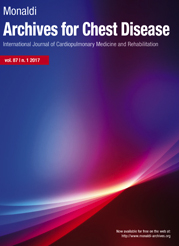Suction pressures generated during thoracentesis using wall suction-based automated drainage: an in vitro and in vivo analysis
All claims expressed in this article are solely those of the authors and do not necessarily represent those of their affiliated organizations, or those of the publisher, the editors and the reviewers. Any product that may be evaluated in this article or claim that may be made by its manufacturer is not guaranteed or endorsed by the publisher.
Authors
Equipoise exists regarding the optimal method to drain pleural fluid during thoracentesis. While several institutions use wall-based automated suction, others point to the risk of excessively high suction pressures and therefore elevated barotrauma risk as a reason to avoid it. We first performed in vitro experiments involving drainage of a 1-liter saline bag using standard thoracentesis apparatus, a digital manometer, and either manual drainage (using a 60 mL syringe) or automated drainage (using wall suction at the maximum setting). The proceduralist was blinded to measurements during manual aspiration. Separately, in a clinical setting involving consecutive hospitalized adults undergoing thoracentesis, dynamic suction pressures were similarly measured during automated drainage. Total aspirated volume, time-to-evacuation, patient discomfort, and complications were also recorded. In vitro experiments showed that compared to manual aspiration, automated drainage using wall suction resulted in shorter average time-to-evacuation (230 sec vs. 365 sec), lower suction pressures (average maximum: -361±4.5 cmH2O vs. -496±5.1 cmH2O, p<0.0001), and less pressure variation (95% of values within a 20 cmH2O range vs. swings between 0 and -500 cmH2O). Twenty hospitalized adults undergoing thoracentesis via automated drainage (mean aspirated volume: 1649.5±685.5 mL) experienced similar suction pressures to those measured in in vitro experiments using automated drainage (average maximum: -350±59.2 cmH2O) and limited pressure variations (mean interquartile range: 19.3 cmH2O). There were no complications, including pneumothorax, hemothorax, or re-expansion pulmonary edema. Thoracentesis using automated wall suction does not generate excessively high suction pressures and reduces pressure swings. It appears safe and effective and may reduce the time-to-evacuation of a pleural effusion.
Ethics approval
This study protocol was reviewed and approved by the institutional review board (2021P002968).How to Cite

This work is licensed under a Creative Commons Attribution-NonCommercial 4.0 International License.






